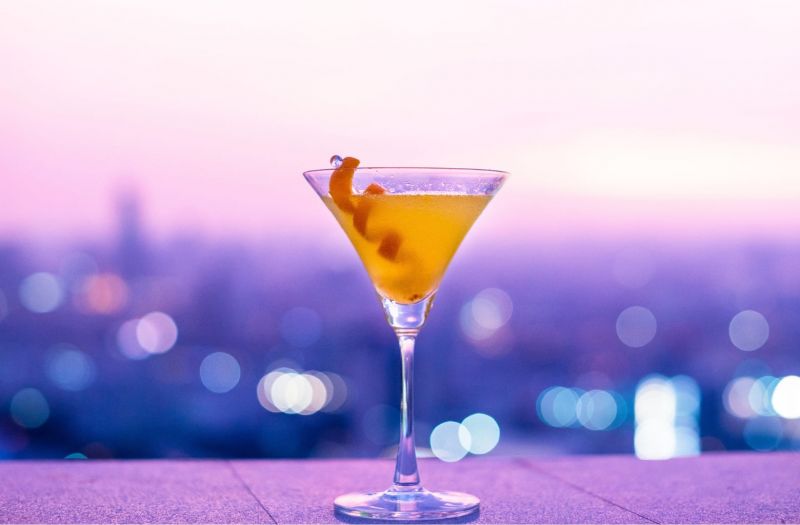Educating Bartenders Worldwide.
By Beverage Trade Network

For any bar, being able to serve the perfect drink every time is the key to boosting revenue and profitability, as well as maximizing guest satisfaction. Choosing the right premium spirits for your bar is just the start – you also have to keep in mind factors such as pour size, glassware and mixers. Here’s a closer look of what you need to keep in mind about serving the perfect drink.
While serving the perfect drink starts with choosing the right premium spirit, the following factors also impact the overall customer experience:
As a general rule of thumb, if a drink looks better, it will taste better as well, and that’s why glassware matters so much. It all has to do with the way the customer perceives value. You could pour the same drink into glasses of varying sizes, and simply judging by the shape of the glass and the overall appearance of the glass, the customer might evaluate quality very differently. The goal here is to maximize perceived value, and that all starts with serving a drink using the optimal glassware.
The pour size matters as well, and that’s why experienced professional bartenders will always use a jigger when measuring out a shot. There are several reasons for this. Most obviously, it prevents the over-pour (in which case you are not maximizing the value of your bottles) and it also prevents the under-pour (in which case customers might start to decide that they are not getting good value for their money).
And a special word needs to be mentioned here about garnishes, which can be very helpful in providing a whole new presentation layer to any mixed drink. Garnishes can add color, flavor and even a bit of sex appeal and glamour. But which one is best for which drink? The classic go-to rule is that oranges should only be used for orange-flavored drinks, lemons for lemon-flavored drinks, and limes for everything else. But the whole artisanal cocktail trend has really challenged that thinking. These days, berries, peels and herbs are being used as garnishes in very creative ways. So don’t underestimate the value of a simple garnish in turning a classic drink into a premium drink.
One reason why signature drinks have caught on in popularity is because they are very effective at establishing brand and venue identity. Simply having one on your drinks menu can help you stand out in a crowd of competitors. Moreover, the naming of your signature drink and the types of ingredients that you add can say a lot about your brand and what it stands for. As an example, if you choose to highlight local ingredients, it can help to reinforce your brand as a trusted local brand. If you choose to highlight exotic or rare ingredients, it can help to create an image of being innovative or even iconoclastic. And, of course, the naming of your drink matters a lot. Imagine one customer ordering a “rum and coke” and another customer ordering a “Cuba Libre.” The two are the exact same drink, but adding Cuba to the name changes everything.
On a related note, seasonal drinks can also be a strong addition to your drinks menu. Think about the way a coffee shop like Starbucks routinely rolls out new flavors and creations during different times of the year – it’s a way of appearing fresh and new, even when some customers might go to the same Starbucks nearly every day of the year. You can borrow this mentality for your bar. Think about winter drink creations that will make people feel festive, perhaps by combining flavors and aromas associated with the winter holidays. The same thinking is possible in the summertime also, when people are looking for a good excuse – any excuse – to spend time outside on a patio, enjoying a relaxing summer cocktail. The best part about seasonal serves is that they can be made different with simply a new garnish or an extra ingredient – everything else stays the same.
Mixed drinks and cocktails will easily be the most profitable item on your bar menu, so the more of them you can sell, the better. And things get even better in terms of revenue and profitability when you can upsell customers on a more expensive, premium spirit or on a special new cocktail creation developed by your house mixologist. Suddenly, a person who might have just ordered a $10 cocktail is now ordering a $15 cocktail or a $20 cocktail.
One insight to keep in mind here is that about one-third of bar patrons are uncertain what to order. That creates a very unique opportunity for bartenders to impress guests, make recommendations, and suggest unique cocktails that can display their full prowess. A key point here is that most people are more likely to trade up within their favorite brand, rather than moving to a new brand or new spirit. Thus, it might be a hard sell convincing a patron to try a mezcal cocktail instead of a tequila cocktail, but not all that hard at all to convince that same person to trade up from Johnnie Walker Red to Johnnie Walker Black. People have a much higher comfort level about trying a premium version of their favorite brand, rather than a new brand entirely.
While sales and profitability considerations are behind each of these best practices, they are also all very customer-centric. After all, improving guest satisfaction is the key to building trust with customers, ensuring plenty of repeat business, and generating plenty of positive recommendations online. When customers have the expectation of ordering the perfect drink every time they visit your establishment, you can be assured that they will be posting about it on social media, telling all of their friends, and leaving 5-star reviews across the web.